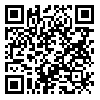Volume 1, Issue 1 (18 2001)
ijdld 2001, 1(1): 9-22 |
Back to browse issues page
Download citation:
BibTeX | RIS | EndNote | Medlars | ProCite | Reference Manager | RefWorks
Send citation to:



BibTeX | RIS | EndNote | Medlars | ProCite | Reference Manager | RefWorks
Send citation to:
Larejani B, Hossein nezhad A. DIABETES MELLITUS AND PREGNANCY. ijdld 2001; 1 (1) :9-22
URL: http://ijdld.tums.ac.ir/article-1-491-en.html
URL: http://ijdld.tums.ac.ir/article-1-491-en.html
Abstract: (34872 Views)
Diabetes during pregnancy is either concurrent diabetes, diagnosed before pregnancy, or ‘gestational diabetes mellitus’ (GDM), first diagnosed in pregnancy.
GDM is the commonest metabolic disorder of pregnancy, with a prevalence of one to 14 percent, depending on the reporting team. The prevalence of GDM in Tehran is 4.7%. Diabetes concurrent with pregnancy is diagnosed according to the recently revised criteria of the National Diabetes Data Group (NDDG). GDM is diagnosed with a 100-gram 3-hour glucose tolerance test (3hGTT100), with at least two abnormally high readings being required for a definite diagnosis.
Screening for GDM is still a matter of dispute. Universal or selective screening? Each has its supporters. The American Diabetes Association (ADA) recommended universal screening until 1997, and this is still recommended for areas with a high prevalence of GDM.
Diabetes during pregnancy has multiple potential consequences for mother and fetus fetal macrosomia being the commonest. The children of diabetic mothers are also more likely to become overweight and develop impaired glucose tolerance.
ADA recommendations for glycemic control in diabetic mothers-to-be include maintaining their fasting blood glucose between 60 and 95mg/dl, and their postprandial blood glucose between 80 and 120mg/dl. Measurement of urinary ketones is recommended when the patient is on a calorie-restricted diet. Lifestyle changes are an integral part of management. Insulin requirements and calorie intake must be adjusted in line with weight gain as pregnancy progresses.
Keywords: diabetes mellitus, gestational diabetes mellitus, screening, diagnosis, management, sensitivity
| Rights and permissions | |
 |
This work is licensed under a Creative Commons Attribution-NonCommercial 4.0 International License. |





